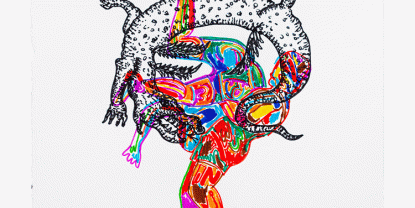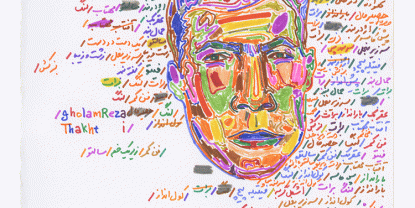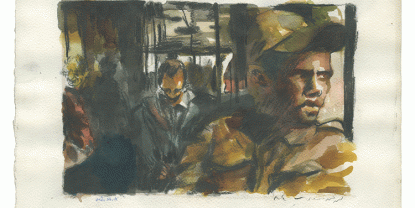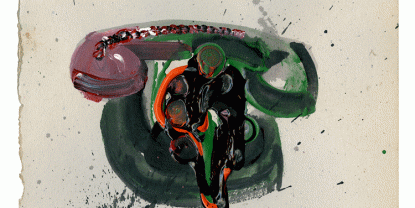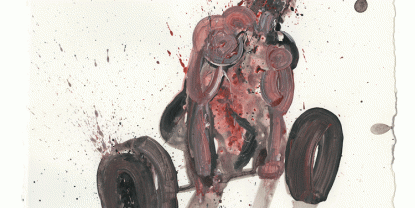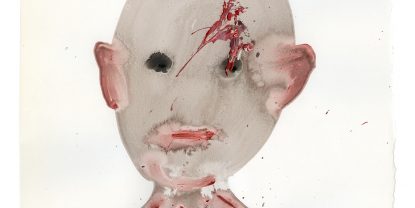Muscle
Seyed Mohamad Mosavat
January 17 — January 28, 2020
“Muscle” bears traces of absence. With the gradual process of an allusive omission and pushing one subject matter into the background, this absence raises other issues that are familiar and mundane; from meaty phones and frustrated faces to brothers in arms and influential personalities. In the “Muscle” exhibition, Seyed Mohamad Mosavat’s sarcasm against moral principles are presented with a justified, fantastical coherence. “Muscle” is familiar in terms of technique and a little strange in its subject matter. In order to understand the masculine world of this exhibition, the audience have to bring their knowledge of Mosavat’s drawings into the structure of the work. Part of this show is a continuation of the “Sorrow” series and the other part is independent of it.
The features of Mosavat’s drawings include references to traditions, relying on the present, with no trace of the future. His coloring technique, done in a random fashion, indicates an attachment to the present moment, and the presence of coffeehouse paintings and lithography signifies the re-creation of the past.
Even though “Sorrow/Selfie” is in continuation of his earlier “Sorrow” series, it has an asexual, stubborn, and narcissistic take on the nature of portrait drawing. The multiplicity of organs and the entanglement of soft facial tissues in this series, indicate a melancholic spirit, which is more dynamic than the earlier “Sorrow” portraits.
The imposing presence of the male figure in the “Sorrow/Muscle” series is a display of sheer dominance and power. These drawings are in line with Mosavat’s favorite method of color explosion and color mixing, while the figures are represented with an inner challenge.
Unlike the personal struggles of “Sorrow/Muscle” series, the marker-pen drawings of “The Tiger of Mazandaran” offer a new recreation of collective struggles and Shahnameh and coffeehouse narratives. In these frames, winner/loser, active/passive, present/absent, spectator/comrade characters are presented simultaneously in terms of contrasting colorings.
“Sorrow/Contact” consists of acrylic drawings of old phones on cardboard. These out-of-order, organic phones, which are among the artist’s first attempts at still life drawing, are passionate in terms of colors and feminine in form. In these drawings, the absence of organs paradoxically leave behind a trace of presence.
“Employee” is a series of marker-pen portraits of influential and renowned characters that Mosavat has reimagined. Much like a photo album, each of these portraits carries a text about the character. Unlike Mosavat’s other drawings, “Employee” has an objective approach.
